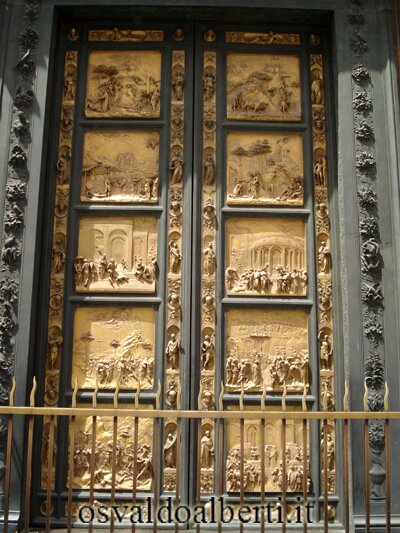The year 1401 was a watershed date. In the winter of that year the wool importers’ guild announced a competition to select a designer for the remaining doors, with the result that some of the greatest sculptors of the age competed against each other, having been invited to submit sample panels on the theme of the sacrifice of Isaac. Only those
designs by Lorenzo Ghiberti and Filippo Brunelleschi have survived, and they are now on display in the Bargello museum.
Ghiberti (c.1378-1455) was judged the winner in 1403 – though the year hardly matters since art historians, a little reluctant to award the title of Father of the Renaissance to any one artist, generally consider 1401, the year of the competition, as the starting point of the Renaissance.
Ghiberti’s work demonstrates some of the features of the emerging Renaissance style, but it was Brunelleschi’s submission that was truly radical, with the use of deep perspective, realism in the portrayal of the human body and allusions to classical sculpture.
Ghiberti finished the north doors, illustrating the life of Christ, in 1424, having worked on them for more than 20 years. The east doors, hailed by Michelangelo as worthy of being the “Gates of Paradise”, took almost all of the rest of his life.
In their original state, with their 10 large panels illustrating the Old Testament, gilded and burnished to a resplendent gold, they must have fully justified Michelangelo’s description. The original panels (replaced by resin reproductions) were removed for restoration after being damaged in the 1966 flood and can now be admired in the Museo dell’Opera del Duomo (that stands right behind the cathedral).

